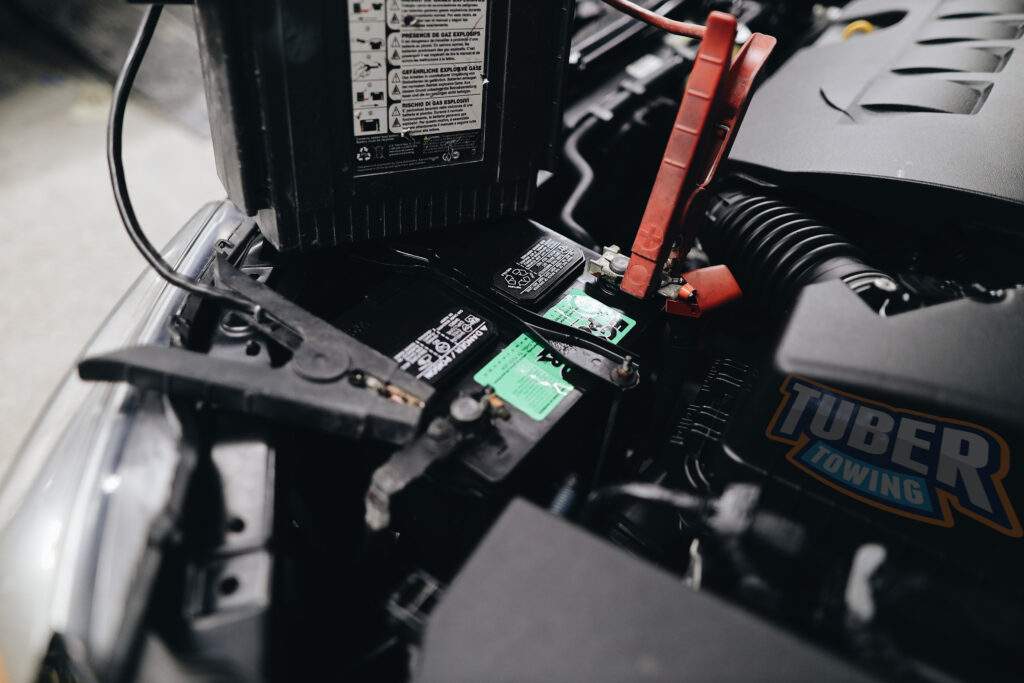Jumpstarting Your Car: A Handy Guide to the Do’s and Don’ts
Picture this: you’re ready to hit the road, turn the ignition key, and…nothing happens. A dead battery can be a major inconvenience, but fear not! Jumpstarting your car is a skill every driver should have in their toolbox. In this informative blog post, we’ll walk you through the essential do’s and don’ts of jumpstarting your car, ensuring a successful and safe experience when reviving your vehicle.
As some might say, the easiest ‘Do’ is to call Tuber Towing. Of course that’s always an option. When you need us we’ll be there. We also fully support teaching and learning so those who want to be more self sufficient can be.
Do’s of Jumpstarting Your Car:
-
Do: Verify a Dead Battery
Before attempting a jumpstart, ensure that the battery is the root cause of your car’s failure to start. Check for signs like dim headlights, a sluggish engine, or clicking sounds when you turn the key. If these symptoms are present, it’s likely a dead battery.
-
Do: Use Appropriate Safety Gear
Safety first! When jumpstarting your car, wear safety goggles and protective gloves to shield yourself from any potential sparks or battery acid. This simple precaution can prevent accidents and keep you safe during the process.
-
Do: Follow the Correct Jumpstarting Procedure
Proper procedure is key to a successful jumpstart. Start by parking the functioning vehicle next to yours, turn off both engines, and connect the jumper cables in the correct order: positive (+) to positive, negative (-) to a metal ground on the dead car’s engine. Start the working vehicle and let it run for a few minutes before attempting to start your car.
-
Do: Allow Time for Charging
After jumpstarting, leave the cables connected for a few minutes to allow the dead battery to recharge. Avoid revving the engine excessively during this time, as it can strain the battery and other electrical components.
Don’ts of Jumpstarting Your Car:
-
Don’t: Connect Cables Improperly
Connecting the jumper cables incorrectly can lead to damage to your vehicle’s electrical system or even personal injury. Ensure the positive and negative terminals are properly aligned, avoiding accidental contact between the cables.
-
Don’t: Ignore Visible Battery Damage
If you notice visible damage, such as cracks, leaks, or corrosion on the battery terminals, do not attempt a jumpstart. These signs may indicate a faulty battery that requires professional inspection or replacement.
-
Don’t: Depend on Jumpstarting as a Long-Term Solution
Jumpstarting your car is a temporary fix and not a long-term solution. It’s crucial to address the underlying issue causing the battery to drain, such as a faulty alternator, loose cables, or an old battery. Schedule a visit to your trusted mechanic to diagnose and resolve the root cause.
-
Don’t: Rush or Panic
Jumpstarting a car can be stressful, especially when you’re in a hurry. Take your time, follow the steps carefully, and remain calm throughout the process. Rushing can lead to mistakes or accidents that could have been easily avoided.
Being equipped with the knowledge of jumpstarting your car can save the day when your battery runs out of juice. Remember the essential do’s and don’ts outlined in this guide to ensure a successful and safe jumpstart. By following the correct procedure, taking necessary safety precautions, and addressing underlying issues promptly, you’ll be back on the road in no time. Just remember, a dead battery is no match for a prepared and confident driver!
Joke of the Post:
Local man arrested when jumpstarting neighbor’s car.
Charged with battery

